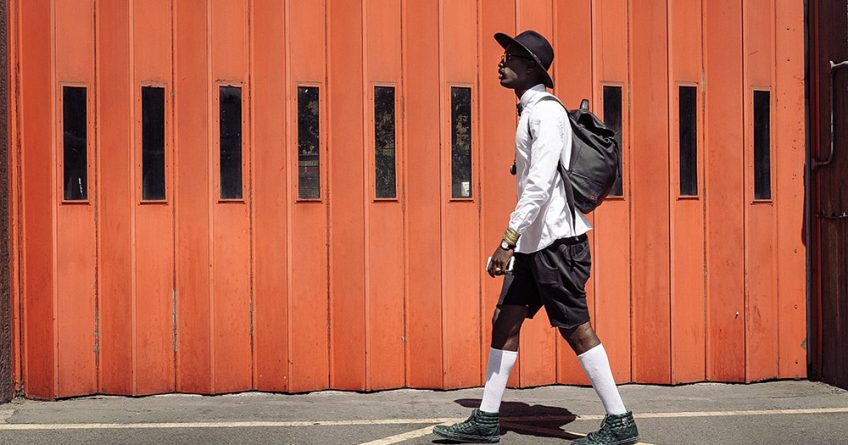As an exercise, walking almost seems too easy. You don’t need expensive gear or equipment, you don’t need to join a club or gym, and you already know how to do it.
Walking is simply an ideal form of exercise. It’s one of the safest things you can do with your body and it’s within the physical capabilities of almost everyone.
Health and Fitness Benefits
Whether you walk to improve your general health, lose weight or stay fit, this low-impact exercise provides a number of health benefits. And it doesn’t even take much effort.
The Center for Disease Control and Prevention states that just 30 minutes a day of moderate-intensity exercise (that’s walking at a pace of 5-8 km per hour) can noticeably improve your health.
It’s not a “quick fix,” of course; it may take a few weeks to feel the benefits. But evidence suggests that, over the long term, a regular walking routine can cut the incidence of many chronic diseases by 30-40 percent. As well, it improves your mental clarity, lowers your stress level and helps you lose weight. Not bad for something that most of us have been doing since we were toddlers.
Injury Prevention Precautions
Although one of the advantages of walking is that you don’t need special equipment, you might want to consider getting a good pair of walking shoes. Walking is low-impact, but injuries are still possible if you’re not prepared.
Ill-fitting shoes can cause blisters or calluses, or worse, “plantar fasciitis,” a painful condition that affects the heel and the arch of the foot.
Because walkers spend more time with the entire foot on the ground (as opposed to runners, who land on their heels), walking shoes need to have plenty of room at the toe so your feet can spread.
Walking for Fitness Method
It’s best to start slowly and progress gradually, especially if you’ve been sedentary. Don’t try to transform yourself from couch potato to marathon walker in the first week.
And remember that a warm-up can be beneficial. Start with gentle stretches that emphasize the muscles of your legs and lower back. Stretching before (and after) walking can reduce risk of injury to muscles and joints.
As you walk, keep your eyes straight ahead and your chin up, and lean forward slightly at the ankle. Avoid forward head posture. Allow your arms to swing at your sides (or bend at the elbow) in natural rhythm with your body.
How fast should you walk? That depends on your level of fitness. But, in general, brisk is best. Walk fast but don’t overexert yourself. You should be able to hold a conversation while you’re walking without having to stop to catch your breath.
How Walking Helps Health and Fitness
Walking benefits your health in a number of ways. Studies show that walking can:
1. Reduce your risk of coronary heart disease and stroke
2. Lower your blood pressure
3. Reduce high cholesterol
4. Reduce the risk of colon cancer and breast cancer
5. Reduce the risk of Type II diabetes
6. Reduce intraocular pressure and lower risk of glaucoma
7. Help improve flexibility and coordination
8. Improve cognitive abilities and enhance mental well being.
Additionally, walking helps increase bone density, which helps prevent osteoporosis. It improves circulation, increases the supply of oxygen in your blood, and helps keep your joints lubricated.
And it just might help you live longer. Researchers have found that people who walk even once a week are 24 percent less likely to die prematurely than those who don’t walk for exercise.
Walking for Weight Control
Regular walking helps alter your fat metabolism. Fat is burned up instead of sugars, which can help you lose weight.
That doesn’t mean you can forget about a healthy diet and head straight for the cookies and ice cream. Weight loss occurs when the number of kilojoules you take in as food is less than the number you expend through walking.
The key to successful weight loss – not just taking it off but keeping it off — is to combine a walking routine with sensible eating. You may want to take a nutritional supplement to ensure you’re getting all the vitamins and minerals your body needs (even if you try to eat right) and lace up your walking shoes.
You can burn 180-250 calories with 30 minutes of brisk walking. And if you’re not able to handle that pace just yet, don’t despair. Walking at a slower pace for longer periods of time may actually burn more fat, especially if you walk in the morning before breakfast. When you walk on an empty stomach, your body is more likely to use your existing body fat to fuel your exercise.
Walking is simple, inexpensive, and one of the best ways to lose weight and lower your risk of disease, so walk on!
Walking Benefit Facts
1. Walking more than an hour a week can cut your risk of heart attack by 73 percent.
2. A brisk 30-minute walk burns about 200 calories.
3. Regular walking lowers your risk of developing Type II diabetes by 25-50 percent.
Sources: U.S. Food and Drug Administration, Nutricise.com, USA Today









